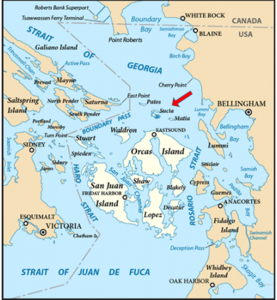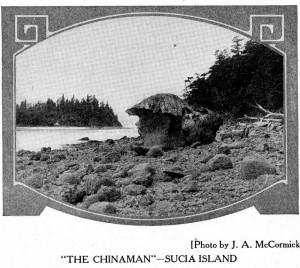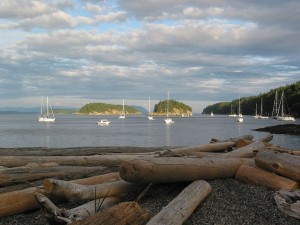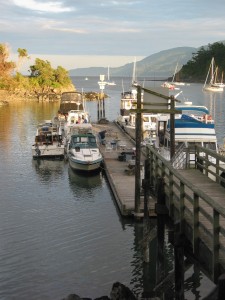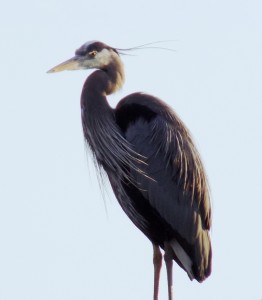Smugglers on Sucia Island? Following our first sail to the island in the early 1980s, I read about a man who’d settled on South Finger Island in Echo Bay the prior winter. He believed that he’d found a remote spot to run drugs between the United States and Canada. What he didn’t know is that in the spring, many boaters would visit their favorite Washington State Marine Park located 2.5 (4.0 km) north of Orcas Island and his hideout would be discovered by the authorities. Keep in mind, this occurred before many guidebooks had been published and communication was minimal.
As it turns out, Sucia Island has had a history of illegal activity dating to the 1800s when illegal Chinese laborers, opium, and wool were hidden among the craggy sandstone outcroppings and isolated coves. Later, during the 1920s and 1930s, rum-runners zigzagged across the US-Canadian border during Prohibition. On the map, you can see Sucia Island sandwiched between Patos and Matia, two other designated marine parks.
On a brighter note, Spanish Captain Francisco de Eliza’s map of 1791 showed Sucia Island. It’s the largest of ten islands in this sateliite archipelago. The name means “dirty” or “foul” because, from a nautical perspective, its shores are littered with dangerous reefs and rocks. The island is famous for its curious sandstone geological formations embedded with marine fossils. This mushroom-shaped rock can be found in Fox Cove, the most sheltered anchorage when the wind blows the waves into whitecaps. One drawback we’ve discovered is that, depending on the tide, a current can sweep boats in a circle around their anchors like the hands of a clock, so you must keep an eye out for potential collisions when it’s crowded.
Other favorite anchorages include Echo Bay, Ewing Cove, Fossil Bay, Shallow Bay, and Snoring Bay.
There are activities for everyone, including: camping in 3 campgrounds, hiking on 6.2 miles of trails, picnicking, beach-combing, birding, clamming, crabbing, diving at an underwater scuba park, and watching wildlife.
Foresight, planning, and generosity preserved Sucia Island for future public visitors. The Washington State Parks and Recreation Commission acquired one-third of the islands in 1952. Before a developer could turn the rest of the island into vacation properties in 1960, the Puget Sound Interclub Association purchased and donated them to the state. Finally, the last private properties were acquired in 1972, making Sucia Island a state marine park.
What legacy will you leave future generations? Have you given it some thought?
Thanks for reading!
Blessings,
Deb


